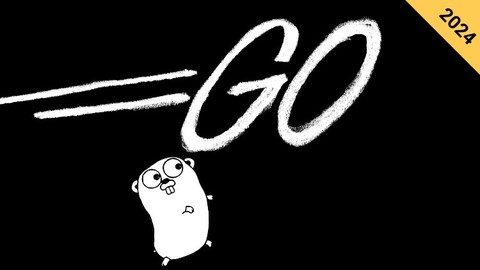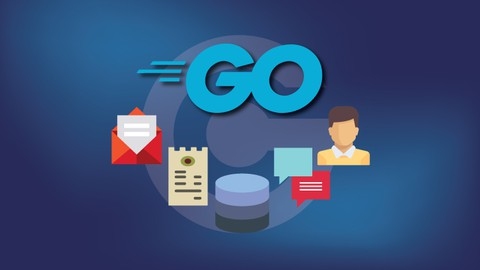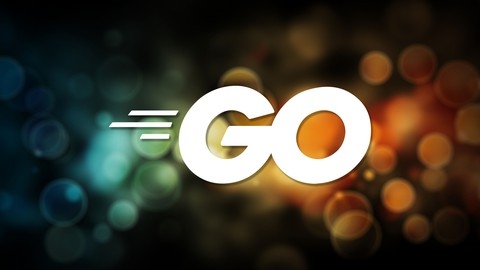Go, also known as Golang, is a powerful, modern programming language designed by Google.
It’s known for its simplicity, efficiency, and concurrency, making it a great choice for building scalable web applications, microservices, and other high-performance systems.
Learning Go can open up a world of opportunities in the tech industry, offering you a chance to work on exciting projects and contribute to cutting-edge technologies.
You’re looking for the best Golang course on Udemy, but with so many options available, it’s easy to feel overwhelmed.
You want a course that provides a comprehensive foundation in Go, covers practical applications, and teaches you how to build real-world projects.
A course that’s engaging, well-structured, and taught by experienced instructors who can guide you along your learning journey.
We’ve carefully reviewed numerous Golang courses on Udemy and based on our analysis, Go: The Complete Developer’s Guide (Golang) stands out as the best course overall.
This comprehensive course, taught by Stephen Grider, is packed with practical exercises, real-world projects, and a focus on best practices.
It covers everything from the basics of Go syntax to advanced topics like concurrency and web development, making it perfect for beginners and experienced programmers alike.
While this is our top pick, there are many other excellent Golang courses on Udemy to choose from.
Keep reading to explore our full list of recommendations, tailored to different learning styles and goals, and find the perfect Go course for your journey.
Go: The Complete Developer’s Guide (Golang)
The course starts with foundational steps like environment setup and VSCode installation, ensuring you’re ready to code.
Early on, you’ll tackle a “Hello World” project, learning about Go packages, import statements, and file organization, with quizzes to solidify your understanding.
The course progresses to variable declarations, functions, slices, and loops, contrasting the OO approach with Go’s unique style.
Practical projects, such as creating and shuffling a deck of cards, offer hands-on experience, while sections on testing in Go teach you to write and test code effectively.
Structs, maps, and interfaces sections deepen your understanding of data organization and manipulation.
You’ll explore pointers, value vs. reference types, and the intricacies of maps and structs.
The course also demystifies interfaces, enhancing your ability to write flexible and efficient code.
A significant focus on channels and Go routines prepares you for building concurrent applications, using a website status checker as a real-world example.
This segment equips you with the skills to manage multiple tasks simultaneously, improving your program’s performance.
Throughout, the course encourages community engagement and provides ample resources for support.
Learn How To Code: Google’s Go (golang) Programming Language
This course adopts a hands-on approach, starting with basic “hello gophers!” applications and advancing to complex concepts such as concurrency, showcasing Go’s capability for building scalable applications.
Through the course, you’ll engage in practical exercises that solidify your understanding of variables, types, control flow, and Go’s standard library.
The curriculum emphasizes concurrency, teaching you to leverage goroutines and channels for writing high-performance software.
By completing this course, you’ll gain a deep understanding of Go and the ability to develop efficient, concurrent programs.
Web Development w/ Google’s Go (golang) Programming Language
This course starts with an introduction to Go, emphasizing its efficiency in handling concurrent tasks, a critical feature for modern web applications.
You’ll gain a solid foundation in Go’s syntax, variables, and data structures, preparing you for the more advanced topics ahead.
Templates are a key focus, teaching you how to dynamically generate HTML pages, a vital skill for any web developer.
The course also guides you through creating your own server, exploring the intricacies of HTTP requests and responses, and leveraging the net/http package for handling web communications.
Practical, hands-on exercises throughout the course reinforce your learning, allowing you to apply concepts in real-world scenarios.
From deploying your site on Google Cloud to managing application state and working with both SQL and NoSQL databases, this course covers all bases.
By the end, you’ll know how to perform CRUD operations, use MongoDB, and even deploy applications with Docker, equipping you with a broad skill set for web development with Go.
Building Modern Web Applications with Go (Golang)
Starting with the advantages of Go over other languages like PHP, Python, or Node.js, this course quickly moves you through setting up your development environment and writing your first “Hello, world” program.
You’ll grasp essential Go features such as variables, functions, pointers, and how to manage system resources efficiently.
The course thoroughly covers web development essentials, including the request/response lifecycle, serving HTML templates, error handling, and organizing code effectively.
You’ll learn to improve your web applications with advanced routing, middleware, and state management using sessions.
Practical projects will help you apply these concepts, focusing on form handling, implementing JavaScript and CSS, and converting HTML into Go templates for dynamic content delivery.
A significant part of the course is dedicated to data persistence with PostgreSQL, where you’ll learn to perform basic and complex SQL queries, design your database, and connect it to your Go application.
Testing is emphasized, teaching you to write unit and end-to-end tests to verify your application’s functionality.
Finally, the course guides you through deploying your application to a server, ensuring it’s accessible online.
By the end, you’ll not only have a solid understanding of Go programming and web development principles but also hands-on experience in building and deploying a real-world web application.
gRPC [Golang] Master Class: Build Modern API & Microservices
Starting with an introduction to gRPC, the course quickly moves to explain its significance in API and microservices development.
You’ll learn about the advantages of Protocol Buffers, HTTP/2, and how gRPC ensures efficient, scalable, and secure communication over REST.
Setting up your development environment is made easy with step-by-step instructions on using Golang, VSCode, and Protoc.
The course then transitions into practical, hands-on learning.
You’ll implement unary, server streaming, client streaming, and bi-directional streaming APIs through exercises like Sum API, Primes API, Avg API, and Max API, with solutions to guide your learning process.
Advanced features of gRPC, such as error handling, deadlines, SSL security, and the use of gRPC reflection & Evans CLI, are covered in detail.
Additionally, you’ll gain experience creating a CRUD API with MongoDB, from Docker setup to executing CRUD operations.
By the end of this course, you’ll have a solid understanding of gRPC and the skills to build modern, efficient APIs and microservices using Golang.
Go Bootcamp: Master Golang with 1000+ Exercises and Projects
This course starts with the basics, such as variables, constants, and data types, and quickly moves to more advanced topics like control structures, error handling, and functions.
You’ll learn through doing, with over 1000 exercises and multiple projects, including creating a retro clock and animating a bouncing ball, which solidify your understanding by applying concepts in real-world scenarios.
The course covers essential Go features like slices, arrays, and strings, including UTF-8 encoding and decoding, ensuring you grasp Go’s data manipulation capabilities.
It also dives into Go’s approach to object-oriented programming with detailed sections on pointers, structs, methods, and interfaces, teaching you how to organize and structure your Go applications effectively.
What sets this course apart is its focus on Go’s internals, such as slice and map internals, and the mechanics behind functions and pointers.
This knowledge allows you to optimize your Go code for better performance.
Interactive exercises and quizzes throughout the course actively engage you in the learning process, challenging you to apply what you’ve learned.
Learn Go for Beginners Crash Course (Golang)
Starting with the basics, you’ll quickly move from setting up your development environment to writing your first “Hello, World!” program.
The course emphasizes practical learning, introducing variables through engaging projects like the “Guess the Number Game,” and teaching you how to make interactive console applications.
You’ll explore essential programming concepts such as flow control with loops and the switch statement, and decision-making in code with if/else statements.
The course also covers complex topics like types, expressions, and Go’s approach to object-oriented programming with composition versus inheritance.
A significant focus is placed on working with strings and operators, equipping you with the skills to manipulate text and perform calculations.
These skills are crucial for any developer and are applied in real-world scenarios throughout the course.
The climax of the course is building a web application, where you’ll apply everything you’ve learned to create a web version of the rock-paper-scissors game.
This includes serving HTML, implementing game logic, and making your web page interactive with JavaScript.
Quizzes at the end of each chapter test your understanding, ensuring you’re ready to move forward.
Go (Golang) Programming: The Complete Go Bootcamp 2024
This course starts with an engaging introduction to Go programming, highlighting its importance and setting you up for success by joining an online community for support.
It guides you through setting up your programming environment on Windows, Linux, or macOS with clear instructions on installing Go, Git, and VSCode.
The course structure is comprehensive, covering everything from the basics of code organization and application structure to compiling and running Go applications.
Interactive quizzes and practical exercises are integrated throughout to solidify your understanding and apply what you’ve learned.
You’ll gain a deep understanding of Go through detailed lectures on variables, types, constants, and packages, enhanced by coding exercises.
The curriculum advances to more complex topics like slices, maps, and file handling in Go, ensuring you’re well-prepared for real-world programming challenges.
Practical application is a key focus, with numerous coding challenges and hands-on exercises across various topics, including arrays, concurrency, and Go packages and modules.
This hands-on approach guarantees that you’re not just learning theoretical concepts but also applying them in practical scenarios.
The course also covers essential OOP concepts in Go, such as structs, functions, pointers, and methods and interfaces, before moving into concurrency with goroutines, channels, and the select statement.
This knowledge is crucial for writing efficient Go applications.
Finally, you’ll learn how to create, publish, and manage Go modules, a critical skill for any Go developer aiming for code that is reusable and maintainable.
Working with Microservices in Go (Golang)
Starting with the essentials, you’ll set up Go, Visual Studio Code, and Docker, laying a solid foundation for your development work.
The course quickly moves into practical application, guiding you through creating a series of interconnected services, including a Broker, Authentication, Logger, and Mail service, each introducing critical concepts like database connectivity (Postgres and MongoDB), JSON handling, and email functionality.
A significant focus is placed on inter-service communication, exploring AMQP with RabbitMQ, RPC, and gRPC, providing you with a clear understanding of each method’s benefits.
Deployment is demystified as you learn to use Docker Swarm for simple setups and Kubernetes for more complex environments, including scaling and updating services without downtime.
The course also covers testing strategies for microservices, ensuring your applications are reliable and ready for production.
Design Patterns in Go
This course kicks off with a clear introduction, setting you up for a deep dive into the SOLID design principles, crucial for crafting maintainable and scalable code.
You’ll explore the Single Responsibility Principle, Open-Closed Principle, and more, with a focus on practical application in Go.
The course covers a wide array of design patterns, starting with the Builder pattern, teaching you to construct complex objects with ease.
It then moves on to the Factory patterns, showing you how to create objects in a way that’s decoupled from their concrete types.
Patterns like Prototype, Singleton, and Adapter are also thoroughly explained, each demonstrated through real-world examples to solidify your understanding.
Beyond these, you’ll learn about structural patterns such as Bridge, Composite, Decorator, and Façade, each offering strategies for better code organization and flexibility.
The course doesn’t shy away from more complex patterns either, like Flyweight for optimizing memory use, Proxy for access control, and Chain of Responsibility for decoupling request senders and receivers.
Behavioral patterns are also a key focus, with detailed lessons on Command, Interpreter, Iterator, and more, equipping you with the skills to tackle common programming challenges in Go.
By the end, you’ll have mastered applying these patterns, significantly improving your code’s quality and your problem-solving toolkit.
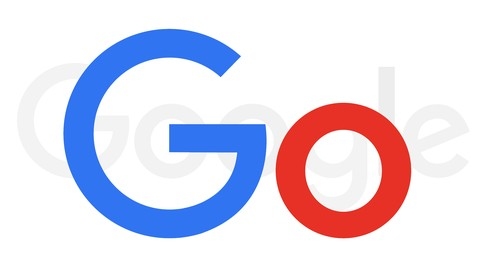



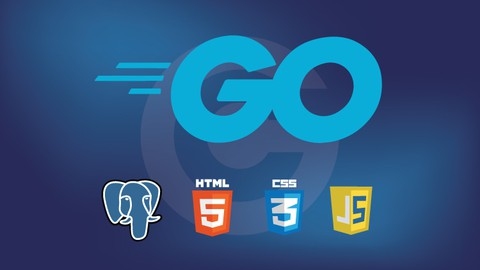
![gRPC [Golang] Master Class: Build Modern API & Microservices](/img/best-golang-courses-udemy/1792960_gRPCGolangMasterClassBuildModernAPIMicroservices.jpg)


